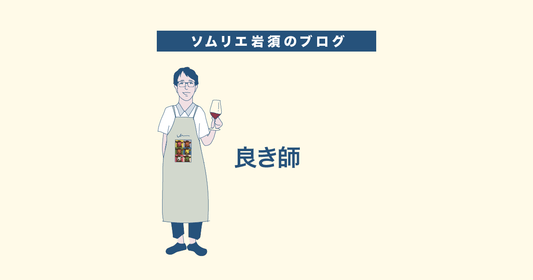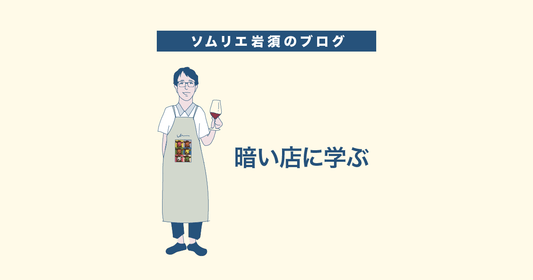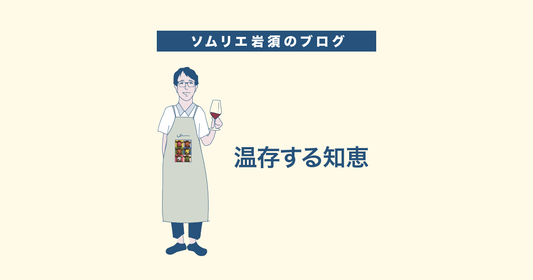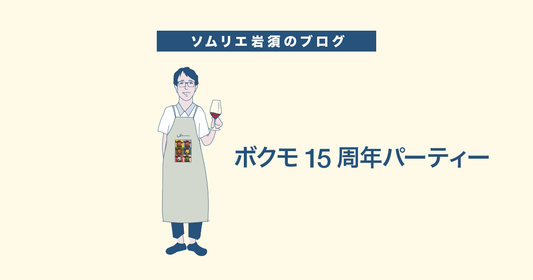
"I've made a reservation for a nice French restaurant. It's for my two-year anniversary with my boyfriend. But I've only ever had French food at my cousin's wedding. I'm a bit nervous."
The person speaking at the counter was Ms. Y, a woman in her second year of work.
I thought, "What an amazing time we live in." When I was young, men were the ones who made reservations for nice meals, and it was men who worried about etiquette, but now I think that's outdated .
Come to think of it, it seems like a lot of men choose their favorite places and go there often, but there are probably a lot more women who gather information about various stores and go to many different places.
I was listening to the conversation thinking that it's not something you often hear between men exchanging information like "That French restaurant was great," but it must be normal between women. Then, Y-san asked me the following question.
"We both drink a lot, so I was thinking about opening a bottle of wine... but I really don't know the proper etiquette at a high-end restaurant. Wine tasting? How should I do that?"
I see.
For those who are not used to it, the "taste" when ordering a bottle of wine at a high-end store seems to be a "tension point" . Indeed, this is something that is not taught at school, nor by parents. There is no guidance from superiors at work.
Okay. This is something that people in the wine industry need to talk about .
So today, in answer to the question of Mr. Y, who is planning his first French date, we will talk about the correct way to "tasting wine" at a restaurant.
First, the conclusion: lines to remember
First, the conclusion: if you are asked to taste wine at a restaurant...
- Just take a sip and say "Please" or "It's delicious."
- Even if the taste is different to your liking, it cannot be exchanged.
If you remember this, you'll basically be fine .
Wine ordering process
Now, let's take a closer look at the steps to choosing a bottle of wine at a restaurant. We'll break it down into chronological steps 1) to 3).
1) Time to choose a bottle of wine from a list
Choose a wine from the wine list. This is actually the most difficult part. The important thing is to tell the sommelier your desired price range and your favorite flavor.
If you order a full-course meal, it can be difficult to pair the whole meal with the same wine. On the other hand, if you choose a glass of wine to go with each dish, your budget may go up. There is also a chance that you may end up with a wine you don't like. In that case, I think it's a good idea to go with your favorite type of wine tonight .
First, state your desired price range smartly. This is a surefire way to win . Point to the price of a wine on the wine list that is about the same price range as your wine budget for the day, and say, "Around this price range would be good today." This is important. "Point to the price, and say, around here today."
This will let the sommelier know exactly what your budget is for wine, without you having to give them a price. If they don't, then the sommelier is a no-no.
Once you have communicated your price range, tell them your preferred flavor. First, choose the type of wine: "Sparkling," "White," "Red," or "Rose ." What kind of wine would you like? It's a good idea to decide this by asking the person you're hosting (the guest of the day) what they want .
If you want to express your preferences, just remember the three basic choice words and say them.
If it's sparkling, white or rosé...
"Refreshing" "Fruity" "Full-bodied"
Roughly speaking, these three options are fine (I think). Try choosing the word that suits your preference.
If it's red...
"Gentle" "Medium" "Rich"
It would be a good idea to choose from these three options.
You will surely get recommendations from the store that are worth the price.
2) Watching the sommelier prepare the wine
This is just a look . The sommelier shows the label to the person who selected the wine (the host of the party) and speaks something. The sommelier just checks the brand of wine and what is written on the label.
It's just a ritual to make sure the wine you ordered is correct, so it's not that important.
After the mumble is over, the sommelier uncorks the wine. Then he asks you, "May I taste it?" This is the so-called "sommelier tasting," a quality check. Well, this is almost a ritual. (On rare occasions, the wine is found to be of "bad" quality, in which case it is replaced with a new one.)
3) Finally, the nerve-wracking (?!) tasting begins. (This is called a host tasting.)
A little bit of wine is poured into the glass of the person who was shown the label earlier (i.e. the person who chose the wine). Unlike beer, you don't have to hold the glass .
Once the pour is finished, the sommelier says:
"I'd like a taste please."
Here it is!
But there's no need to be nervous, because this is almost a ritual.
So, once it's poured and you've taken a sip, all you can say is :
"please."
or,
"It's delicious."
Or,
You could say, "It's OK," or "No problem," or "That's great," or "That's awesome!" Or even, "You're amazing!" (No, that's going too far.)
What's needed is to give the go-ahead that "this wine is OK."
Huh? Is that all?
Yes. That's basically fine.
Why just getting the go-ahead is okay, but exchanges are generally not allowed
In fact, this "tasting by the customer who selected the wine" has nothing to do with whether or not the customer likes the taste of the wine they selected. It is only done to make sure that the wine's aroma and taste are normal .
Wine is a drink whose quality can deteriorate due to a bad cork or poor management during transportation. It is expensive, but it is quite delicate. Or maybe it is because it is expensive that it is easily damaged. In any case, the premise of wine is that "no matter how high-quality it is, there is a possibility that the contents may have gone bad."
That's why, at high-end establishments, the first hurdle is the sommelier, and then, finally, the second hurdle of the customer's OK, and only then is any payment made .
In most cases, since a professional sommelier has already gone through the checkpoint, you can trust them. So, if you say "Onegaishimasu" or "Oishii desu" (It's delicious), it means that everyone at the table will pour and it's okay.
Of course, there are exceptions if you have a lot of wine experience. If you can catch the bad guy who the sommelier overlooked by saying, "You're pretending not to know, but you're actually a criminal! You can't fool these eyes!", it's possible to bring him back to the sommelier's checkpoint.
In other words, if you think something is a little off, have the sommelier check it again, and if the sommelier judges it to be "I see, that's true. This wine has deteriorated," then it can be "returned." (It is quite difficult to draw the line at what can be called deterioration, and even sommeliers sometimes have trouble judging a wine.) In all other cases, the rule is that it cannot be returned.
"It hasn't deteriorated, but the taste is not so good ." Even if that happens, I'm sorry, but you have to accept it for that night. This is treated the same as food . Even if you think the food is "Hmm, the taste is not what you expected," you can't return or exchange it .
What if you wish you had found a wine that was a little more to your liking?
"So how can I order a wine that suits my taste better?"
"Okay, let's learn your favorite variety."
In this way, I hope you will become a little interested in the world of wine and do your homework at a casual store like ours , and I believe that this homework will lead to "future satisfaction" (that's what it comes down to! Sorry for being so stingy!).
review
- The wine list is a good way to "indicate your budget" and "roughly communicate your taste preferences."
- Waiting to be poured
- The host tasting is basically "It's delicious"
All you have to do is enjoy it slowly.
The wines served at high-end restaurants are all of a certain level, so don't gulp it down. Instead, take your time to enjoy the wine and notice the changes in aroma and flavor.
Oh, one last thing. In high-end establishments, the sommelier will generally pour the wine for you , so you don't have to pour it yourself like you would in a casual establishment. If you want the sommelier to pour it for you, just call the sommelier and have them pour it for you.
So, Mr. Y, was this helpful? Please enjoy your 2nd anniversary dinner with him. By the way, he has a girlfriend who even prepares for a French dinner!
That's nice. I feel happy.
(By the way, who pays?)





